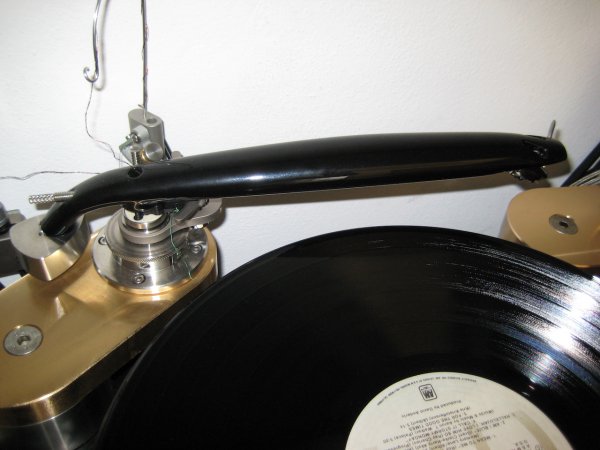Well it may be true that Marc Gomez has a Mechanical Engineering Degree and studied materials science....but reading his 'explanations' for the 9" preferred tonearm length.... he seems to lack the necessary Structural Engineering qualifications to complete the picture...?
He includes a diagram titled "Effect of length in vibration amplitude and frequency" and shows a diagram (and speaks of) a cantilevered "ruler" of a short length compared to a longer length.
Now on the face of it, this all seems reasonable and is certainly true of a pure cantilever.....
But a tonearm with the cartridge resting on the record is NOT a pure cantilever.
It is a PROPPED cantilever and all the Bending Moments, Shear Stresses and Deflections are entirely different (and change with the degree of VTF on the stylus) to that of a pure cantilever.
So the SAT arm has been designed by Marc Gomez as a tapered tube (from pivot to cartridge) which mirrors the stresses of a pure cantilever much like other tonearm designers like SME have also done.
Continuum Audio Labs with their Cobra and Copperhead tonearms utilised a team of qualified University Experts with access to advanced software and technology to model the arms using NASTRAN, PATRAN and DYSTRAN finalising in the complex process of Gradient Shape Optimisation using Reshape.
View attachment 41628
THIS is the true shape of the stresses involved in a 'Propped Cantilever' and the true shape for maximum RIGIDITY for that application.
The SAT tapered tube is NOT the correct shape for maximum rigidity of a propped cantilever whether it's 9" or 12".
Now I'm not denying Michael, that you prefer the SAT on your Caliburn over the Cobra......but I'm pretty sure it's not because the SAT is more rigid than the Cobra.
And if Mark Gomez can make an elementary mistake on physics....his justifications for 9" over 12" are suspect IMO.
If you compare the shape of the Cobra and Copperhead arms to the SAT (and also the Kuzma 4 point and SME)......you will find that a simple 'tube' more closely approximates the shape of the Copperhead than that of the SAT.
And if you look through the history of tonearms and study the slenderness ratios of some of the tube tonearms throughout the decades........the Moechs, the Hadcocks, the long Micro-Seikis and SAECs let alone the Shroeder tonearms... would never pass the first listening test if Marc was correct about his theory of rigidity.
A tonearm only has to be rigid
enough for the purpose.
It's like a structural engineer telling a client he can make his floor more rigid if the room were 10 foot wide instead of twenty......

Most tonearms are rigid enough....
There are other reasons you find the SAT arm so superior






